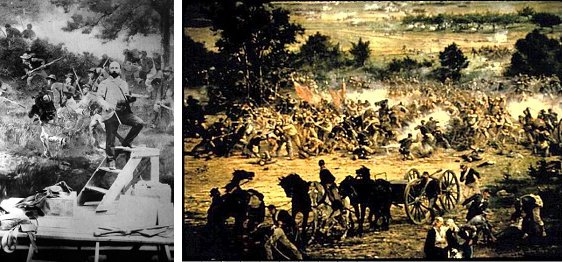
In 1883 French artist Paul Philippoteaux unveiled a remarkable painting: The Battle of Gettysburg, a single enormous canvas 22 feet high and 279 feet long that was curved into a circle so that the viewer found himself in the midst of Pickett’s Charge, the climactic assault of the Civil War.
“It is quite impossible to describe the effect which is received on first coming up out of the little passage into the midst of the picture,” marveled the Daily Transcript. “It is something as it would seem were one to become of a sudden a part of the picture. … In short, one feels quite helpless and wondering in the midst of this new and extraordinary nature. It would seem as though all these queer impressions might be at once met and settled by the simple consideration of the fact that it was only a picture. But that is just it; it is impossible to accept the thing as a picture. Not because it is absolutely natural, but because there is nothing by which to gauge the thing, one has no idea whether the canvas is ten feet distant or a thousand. And so, all means of rational judgement being removed, the spectator must remain, dazed and helpless, feeling much like the little girl in ‘Alice in Wonderland,’ when told that she was but a thing in the dream of the sleeping king.”
Philippoteaux added a hidden signature: He gave his own likeness to one of the Union officers.
